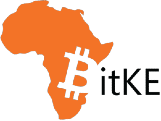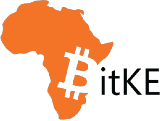All the efforts by China, Russia, and the BRICS countries risk being undone by the rise of stablecoins, a Chinese economist has warned.
Through an editorial featured in Chinese media outlets, Zhang Ming, the Deputy Director of the National Finance and Development Laboratory warned that as U.S dollar stablecoins become more integrated into global digital platforms, they could further strengthen the dominance of the U.S dollar in international finance.
Stablecoins, which are issued by entities that hold significant reserves of dollars in the form of treasuries and cash, have emerged as one of the most powerful applications of cryptocurrencies.
REPORT | Stablecoins Have Become Crypto’s Killer App Amid Blockchain Scaling Improvements, Says New @a16zcrypto Report
Stablecoins have entered the same conversation as entrenched payment services as VISA, PayPal, ACH, and Fedwirehttps://t.co/hwXCV1VYAh pic.twitter.com/OXHtvAIf2E
— BitKE (@BitcoinKE) November 18, 2024
Stablecoins have fueled the growth of decentralized finance and have now expanded to serve as a hedge against currency devaluation worldwide, as well as enabling cross-border trade. The strategic advantages they provide, backed by these dollar reserves, are not going unnoticed.
Paolo Ardoino highlighted the situation recently revealing that his company, Tether, the issuer of the popular USDT stablecoin, has risen to be the 17th largest holder of U.S. government debt, while the stablecoin is being held by 400 million users across emerging markets.
“We are basically selling the US debt outside the US … We are decentralizing the US debt as well, basically pushing for dollar hegemony. That’s how the US can maintain its dominance when it comes to its currency.”
– Paolo Ardoino, ceo, Tether
[TECH] STABLECOINS | ‘We Have 400 Million Users in Emerging Markets – We’re Basically Pushing Dollar Hegemony, Selling U.S Debt Outside the U.S,’ Says Tether CEO: Tether is currently the 17th largest.. https://t.co/B9NgyF7CeK via @BitcoinKE
— Top Kenyan Blogs (@Blogs_Kenya) March 9, 2025
If you recall, President Trump’s recent executive order on cryptocurrencies pledged to support the development of dollar-backed stablecoins worldwide, extending their use beyond the U.S. domestic market.
The Chinese article by Ming is titled “Digital currency reconstructs the international financial system”, where he suggests responses China could take to counteract the dollar stablecoins, namely expanding the scope of the digital Yuan, increasing usage of Chinese digital platforms, and launching stablecoins.
“Once the U.S dollar stablecoin links the international credit of the U.S dollar with the application scenarios of the virtual world more closely, it may greatly consolidate the hegemony of the U.S dollar,” he wrote.
First, he says that China’s central bank digital currency (CBDC) currently has a limited scope, focusing mainly on M0 – essentially cash-like retail payments. This means it’s mainly used for transactions that resemble physical money.
However, he advocates for expanding the digital RMB to also cover M1 and M2.
- M1 includes money that is immediately accessible, like checking accounts and physical cash, while
- M2 is a broader measure that adds things like savings accounts and money market funds – essentially, it would allow the digital RMB to compete with all types of bank deposits.
He also urged China to explore stablecoins, referring to it as a ‘greenfield opportunity.’
Mr. Zhang also wants China to broaden its influence by introducing ‘global application scenarios’ through Chinese platforms. The most prominent example is Ant Group, along with its subsidiaries, Alipay and Ant International, which have a vast reach across Asia and globally.
“Expanding the use of digital tokens on these platforms can significantly expand the international currency status of RMB, thereby more calmly responding to the challenges of U.S dollar stablecoins,” wrote Mr Zhang.
China’s strategy seems to be focused on collaborating with its BRICS member and partner states to diversify the currencies used in international trade. BRICS now encompasses 10 of the 20 most populous countries in the world, which account for a combined population of approximately 4 billion people, representing nearly half of the global population.
Combined, the nine BRICS members and the additional nine BRICS partners account for over 41% of the global GDP, measured in terms of purchasing power parity (PPP).
The increasingly powerful bloc is pushing for an independent payment system based on their national currencies to get away from the United States-led financial hegemony.
[TECH] BRICS | BRICS Wants to Introduce an Independent Payment System Based on Cryptocurrencies: BRICS, the group of nations that includes Egypt, Ethiopia, and South Africa is set to establish an independent.. https://t.co/B9gKgaXnAa via @BitcoinKE
— Top Kenyan Blogs (@Blogs_Kenya) May 5, 2024
Follow us on X for the latest posts and updates
Join and interact with our Telegram community
_________________________________________
_________________________________________








